|
with Jayne Besjak Theory of the Case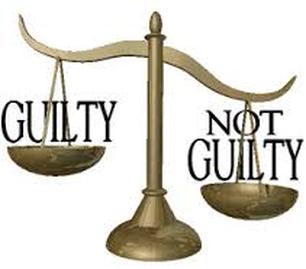 We used the beginning of class this week to review important concepts and terminology students have been studying in preparation for conducting a mock trial. The overall trial procedure (the steps in a trial), courtroom participants and their responsibilities, and the differences between criminal and civil trials should now be familiar territory for students. Using our example case of McGregor vs. Peter Rabbit we discussed how lawyers develop a theory of the case or "storyline" that describes events from their perspective to argue effectively for either guilt or innocence. This story must be backed up with supporting facts, evidence, and witness testimony. The discussion of these concepts seemed rather abstract to students until they once again broke into teams and began to dig into the details of the tale and pull out specific information to formulate their arguments. Students worked in prosecution and defense teams (six students per team) to brainstorm and develop strategies for arguing their side of the case. Two students on each team were tasked with drafting an opening statement and four students on each team were responsible for identifying facts, evidence, and witnesses to support their theory. It was very interesting to watch students initially struggle to come up with a direction forward, not knowing where or how to begin articulating their theory. But after searching the story and mulling over ideas with teammates, they arrived at some exciting "aha" moments and their theories began to take shape and build momentum. Students started looking at the subtleties of the story, reading more carefully to interpret precisely what had occurred. They began to see nuances in the characters and thinking creatively about how the pieces might tie together to help form their case. By the end of the class, both sides had formulated their theory, written opening statements, and compiled a list of witnesses to question. Way to go teams! Opening StatementsThe purpose of the opening statement is to introduce to the jury the facts of the trial. Students have learned that an opening statement basically paints a picture of how the trial will proceed and outlines what the evidence will show or prove. This of course is a direct out-growth of the overall theory of the case. The delivery of the opening statement should flow naturally and keep the attention of the jury. We will work on these and other aspects of public speaking throughout the semester. There was just enough time at the end of class for each side to quickly run through their opening statements. We will hear these again next week as part of the entire trial of McGregor vs. Peter Rabbit. Homework - Final Preparation for Trial!Next week students will conduct the mock trial of McGregor vs Peter Rabbit, including opening statements and direct and cross examination of witnesses. This will be an example run through of the mock trial process, and there is no expectation that students will be fully prepared for every aspect of the trial. The purpose is to walk through the trial together as a learning experience so that all students become comfortable with the trial procedure. We will be pausing many times throughout the trial to answer questions and to discuss protocol for questioning witnesses, making objections, etc.
EVERYONE should read and re-read the Tale of Peter Rabbit so that you know the facts cold and are prepared to make your best argument. Prosecution and Defense teams should come prepared with:
My understanding at the end of class is that both sides have prepared this information. However, it may be necessary for teammates to communicate and coordinate this week to finalize the work. If you do not have contact information for your team, please email me and I will provide that for you. For those responsible for delivering the opening statements - make sure both teammates are involved and communicating on the final draft of the statement. If anyone has any questions about the homework, please contact me. Looking forward to seeing all of you in court next week!
0 Comments
with Kim Rodgers Christianity in BritainToday was a very different mood than the last two weeks! Instead of war and combat we talked about Christianity coming to Britain via the monks. They arrived in Britain with the goal of spreading their faith throughout this wild land. They also brought with them their ability for reading and writing, which was very rare at that time. Books were scarce due to the fact that it often took months, if not longer, to print out one book! The process to make parchment, ink, and quills took time as well. The monks made a name for themselves as they printed copies of Bibles and other religious books by hand, adding their own artwork surrounding letters on the page called illuminated letters. You might remember these as looking like paintings etched with gold surrounding a letter at the beginning of a page. Illuminated Letters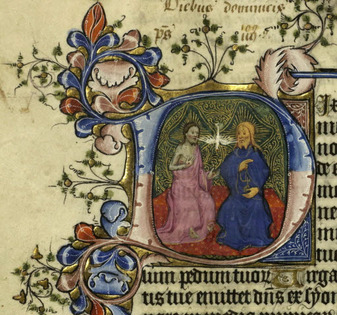 The students worked on making their own illuminated letters by practicing fancy writing using two or three pencils taped together. Once they had their letters how they wanted, we talked about how they could embellish their letters using drawings inside or surrounding them. We looked at examples of manuscripts on the computer so they could have lots of options. They then transferred their rough drafts onto pieces of cardstock and traced their letters with white glue. The plan is to let the glue dry, go over it with gold pens, and use colored pencils to add color and depth. I’m excited to see how they turn out! I told them if they wanted to make more letters at home they could draw them and trace them with glue as we did in class. They can bring them in next week in order to use the gold pens on them in class. Next week the students can bring in their notebooking pages, their maps, and any letters t!hey created during the week. Have a great week! with Michelle Cameron Creating CharacterToday we talked about our tasting words. Our word collection is growing nicely. Several of the children had completed their stories from last week or had stories to share. Several of the completed stories did a nice job of incorporating the sense details we discussed last week as part of the treasure box. We talked about having great ideas in our heads and the fact that we sometimes don’t get them down on paper. And one of the stories was a perfect segue-way into our discussion about character. We started out by reading a picture book with the deliciously naughty protagonist, Jake, in Simon James’s The Day Jake Vacuumed. As we read, we discussed how the illustrator gave us clues to Jake’s personality, anticipated what might happen next, and what the kids would do if all parental controls were lifted. (Don’t worry – Jake gets his come-uppance at the end!) Then we talked about characters – the fact that they don’t have to be human, that, like Jake, they can do naughty things (but just on paper), and that they are not the same people as the writer. Our writers were given large sheets of paper and, after closing their eyes and picturing a character, were told to begin a drawing. They were then asked the following questions: 1. What’s the character’s name? 2. How old are they? (can be just born, can be a zillion years old…) 3. Do they have brothers and sisters? List them. 4. What color is their hair? (If they don’t have hair, what color is their fur, or scales, or skin?) 5. What color are their eyes? (How many do they have?) 6. Where does the character live? (It could be an imaginary place or planet.) 7. What do they like MOST to eat? 8. What do they HATE to eat? 9. Do they have an enemy? What’s the enemy’s name? 10. Do they have a secret? What is it? 11. What do they WANT? (We talked about what Harry Potter and Dorothy from the Wizard of Oz wanted. I explained that every character must want something and that’s where the story usually starts). After completing their drawings and answering the questions, they described their characters, and I was happy to see a nice mix of imaginary, animal, and human characters. We then launched into writing the day’s stories. We wrote until the end of class and I encourage them
all to complete their stories over the course of the week. (And if they did finish, they should write a “Part 2”). We’ll share their stories at the beginning of class next week. This week’s word collection should be action words – verbs, if possible. I can’t wait to hear their stories next Monday! Have a great week, everyone. with Michelle Cameron Treasure Box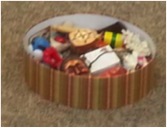 We started out today by talking about our “red words” – and the kids brought some great ones in! We added them to our World Bank, which we’ll keep adding to – and use sometime in the future. Several of the students brought in stories, either ones they’d started last week in class and finished at home or original stories. I reminded everyone about our rules for reading and critiquing. Some of the aspects of their stories that we commented on:
Finally, we wrote stories about how each treasure made their way into my treasure box. As usual, not everyone finished their stories, and I’ve asked them to finish them up during the week.
Our word bank should continue to grow. Since we couldn’t taste our objects, I asked them to bring in two “tasting” words. I have a feeling we’ll be hungry when we hear these next week! with Jayne Besjak Courtroom ParticipantsSteps in a Jury Trial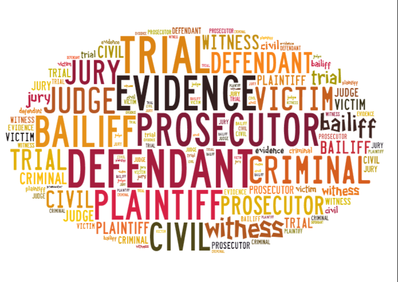 We opened class this week with students breaking into small teams for a short jeopardy-like challenge to review the roles and responsibilities of participants in a courtroom trial. Students were given character cards and worked with teammates to select the correct character based on clues I read aloud. By the end of the game, most students had a pretty good grasp of the basic responsibilities of each trial participant. I explained to students that I will be throwing a lot of new terminology at them these first few weeks of class so that everyone can acquire a foundational knowledge of courtroom participants and procedures. Please encourage your student to review the vocabulary and definitions we discuss each week - I will provide handouts in class and the information can also be found in many of these posts. Students are eager to pick out their roles and start the mock trials, which is great! But, our mock trials will run more smoothly and students will enjoy them much more if they put the time in now to learn these important concepts. The excitement and fun of the trials will begin soon, I promise! In addition to learning the roles and responsibilities of the individual trial participants, we also discussed the flow of the trial procedure so that students can understand the order of events and what to expect when they go to trial. Please review the trial procedure handout provided in class, along with the diagram of a typical courtroom layout. McGregor vs Peter Rabbit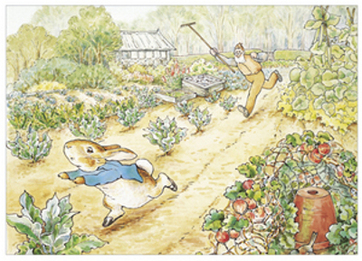 Oh no! Peter Rabbit has been charged with criminal trespass and robbery! Oh no! Peter Rabbit has been charged with criminal trespass and robbery! We will be using a classic fairy tale as the basis for an example trial which the class will work through together. This will be a great warm-up exercise and practice for the mock trials to come. I have divided students into prosecution and defense teams and read them a synopsis of the incident and charges. Teams are now tasked with developing a theory of the case from the perspective of their side. We also read the entire fairy tale in class, which they are to use as the basis for identifying facts, witnesses, evidence, and an overall strategy for argument. Teams met briefly at the end of class to brainstorm ideas and will meet next week to continue their work to develop the case. Homework
with Leigh Ann Yoder Planet Mnemonics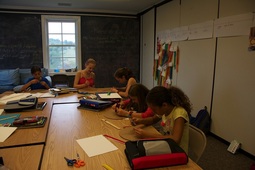 Students began this week's class by sharing their mnemonics to help them remember the order of the planets. Here they are:
As a class we then spent a few moments filling in a table to establish proportional diameters and distances for our planets. The remainder of our class time was spent working on our model solar system. One of the biggest challenges for the students was working with a compass. I was very pleased to see the students work through their frustrations and very few asked for help. They were all determined to complete the project independently. Unfortunately, we ran out of time, so the students were asked to finish the project at home and bring it back to class next week. They should have all the supplies they need. Here is a link to the instructions, just in case there are any questions. Please note that we are skipping Chapter 2 (The Sun) this week and moving to Chapter 3 (Mercury). We will come back to the sun next week. HomeworkMANDATORY:
Complete the model solar system begun in class and bring next week ECA Chapter 3 (Mercury) Lending Library Book Bring in a shoe box next week OPTIONAL: ACG Chapter 3 & 4 NB - pg. 34, 35, 38, 40 with Kim Rodgers Brave HeartsWhat a great time we had today! We started off sharing what we wrote on our notebooking pages about our last class, and going over the maps. Then we headed into our topic for today, The Early Days of Britain, which detailed the history of the Celts at the end of the Roman Empire. Bards passed stories down of warring tribes of Celts vying for ownership of land. The leader of one tribe, named King Vortigern, was so concerned about enemy tribes taking over his land that he sent a message across the North Sea to the Angles and the Saxons inviting them to come over and help them battle in exchange for land in Britain. After they helped the tribe successfully defeat their enemies, the Angles and the Saxons sent word to their people that Britain was a wonderful place to live, inviting them to come over and settle there as well! So many came over that it was eerily reminiscent of the Romans invading their land. Some Celts gave in and lived among the Anglo-Saxons, while others retreated to the north and the west forming what we now call Ireland, Scotland, and Wales. Because a lot of the history was passed down by bards (people who told stories using poetry or song) and not through the written word, we refer to this time as the Dark Ages. One story that has been passed down is Beowulf. We read a simplified, poetic version of this story in class. After discussing what we read, the class transformed from a group of young children to a Celtic warrior tribe in battle. We made battle axes, used blue paint to decorate our faces and bodies, and tried to make our hair stand on end. The Celts did this to intimidate their enemies...and it seemed to work a lot of the time! The kids had a blast deciding how to decorate themselves and lashing their ax heads to their posts. At the end of class we waited until the other classes came outside. The warriors stormed them, yelling and running full force! HomeworkFor homework they have the notebooking page and another map. I reminded the students today that the notebooking page is for writing down what we learned in class. It’s as if someone is asking them what we read about today and they are telling them in as much detail as possible their answers. Again, please feel free to write for your child if they are overwhelmed by the amount of information they want to share. Oftentimes they just need someone with them while they’re writing or re-telling the story to ask, “What happened next?” I included details of what we studied in order to give you some information if you need to help them with the notebooking. Next WeekNext week have your child bring in the notebooking page and the map to share. No need to bring anything else. I’ll provide everything for the activity. Again, if you have any questions, please e-mail me anytime.
See you next week! with Jayne Besjak Welcome to the Courtroom! Welcome to the start of our fall 2014 semester! It was such a joy to see returning and new students gathered today at Mosaic. We have a large and enthusiastic group of students in our class which is going to be absolutely perfect for conducting mock trials! After introductions and a discussion of classroom etiquette, I provided a broad overview of what it means to participate in a mock trial. I explained to students that they will be imitating real courtroom and trial procedures - cases based on fairy tales and literature - where students will assume the roles of actual trial participants. These will not be scripted dramas, but rather the statements, presentations, questions and answers that students create themselves based on research, facts and collection of evidence. One of the most exciting aspects of this process is that the outcome of each and every trial - guilt or innocence - will hinge on how the students are able to bring each case to life!  I read aloud a version of the allegorical story “The Lady, or the Tiger?” to get students thinking about the concept of justice. Ask your student to recount the tale - they enjoyed it! I served several students with “Notice of Trial” cards and they were brought into the classroom arena, as we conducted our own semi-barbaric style trials. Students were charged with such heinous crimes as talking in class, running with scissors, and fighting at lunch - all punishable by death! Thankfully all were deemed innocent, and the exercise sparked discussion about what is “fair” and how guilt or innocence should be determined in a society. 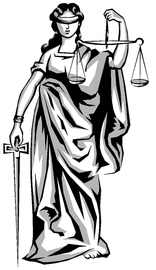 Lady Justice Lady Justice I introduced the image of “Lady Justice” to the class and asked students to identify her distinguishing characteristics. We discussed what each of these symbolize in our system of justice: the balance - weighing evidence the sword - delivering punishment the blindfold - objectivity, also known as the concept of “blind justice”. Students began to see that justice is in fact a complex concept involving rights, laws, and the interpretation of laws. Much more to come on this as we proceed through the semester! We then looked at the three branches of government to see how our Constitution provides for a separation of powers. Students should remember that:
I explained to students that there are two types of trials - criminal and civil - and that they will be engaged in both types during this class.
Homework...
We're off to a fantastic start - I love the enthusiasm of this group! See you all next Monday! with Michelle Cameron Getting to Know You: Story Magic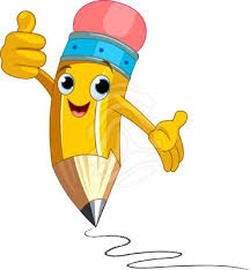 What a great start to the session! I really enjoyed meeting your young writers and learning about their summer vacations, favorite books, and the fact that so many of them have great story ideas. To get us started, I asked a number of questions. They wrote the answers down (sometimes with help – thanks so much, Kim!) and then we shared them. Here was what I asked: 1. What color is your toothbrush? 2. What is your favorite food? 3. How many pairs of shoes do you have? 4. What is your favorite animal – real or imagined? 5. What name do you wish your parents had given you? 6. If you could go anywhere – on earth, in outer space, an imaginary place – where would you go? 7. When you knew you were starting a writing class today, how did you feel? 8. What’s your favorite toy? 9. What’s your favorite thing to do? 10. What’s the best way to capture a dragon? Have them show you their answers and you’ll see why I’m so excited to work with them. Their imaginations are on over-drive – exactly the way they should be, at their age. We took my answers (which I was jotting down on the whiteboard as we talked) and made a story out of the resulting words. I did my best to pull them away from being too literal (just because my toothbrush is red and white, it doesn’t mean we need to include a toothbrush in the story!) and encouraged them to think nutty.  Some of them wrote complete stories, while others just got started on theirs. Both results are fine. Children (and adults) write at different speeds and the worst thing to do to a slow writer is to push them to hurry up. I did ask those who just started stories to work on them over the week. Those children that did finish their stories have been challenged to write a brand new one, using the same words. Parents, please help them both rethink their word lists as well as scribe for those who need it. Our philosophy at The Writers Circle is that we don’t want the mechanics of writing to slow down the children’s imagination and enthusiasm. Of course we shared what they wrote and I let them know that they need to start off from the positive when talking about anyone’s work. I already see that they are good listeners. Finally, each child has been given two index cards to collect two “red” words this week. I was pleasantly astonished that they’re already considering emotions as well as concrete words – when I asked for examples of red words, they volunteered angry and mad, as well as apple and blood. If they’d like, they can list all the red words they like in their notebooks and just give me their two favorites next week.
I hope they enjoyed the class as much as I did! See you next week! with Kim Rodgers Welcome to Exploring the Middle Ages!
|
Categories
All
Archives
May 2016
|

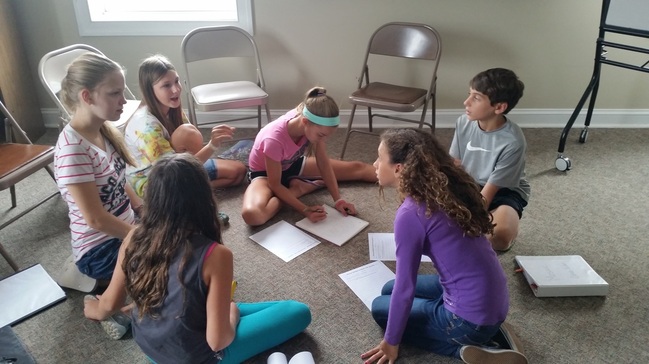
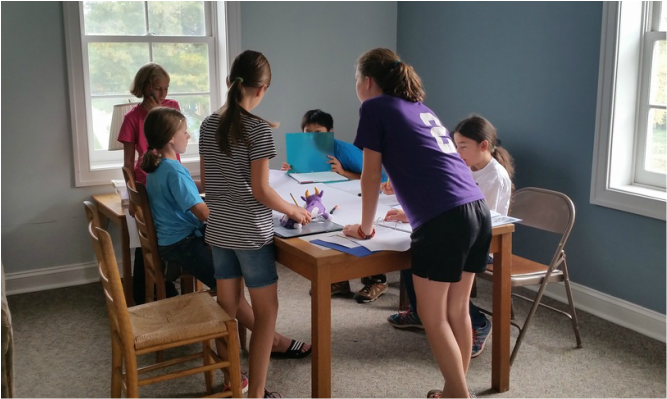
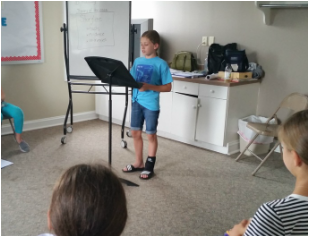
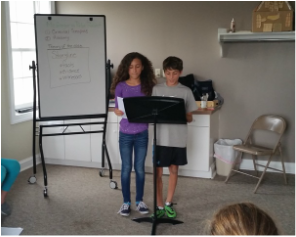
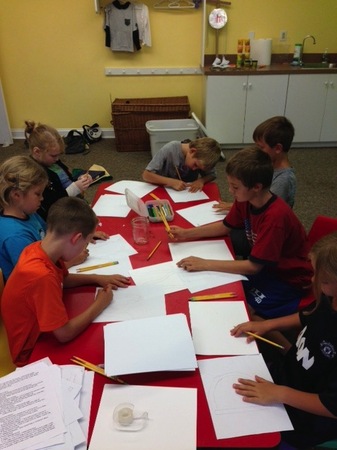
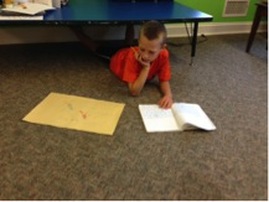
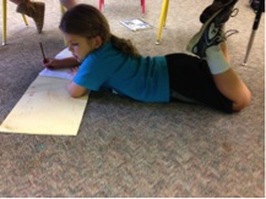
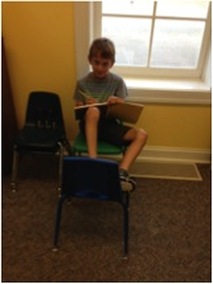
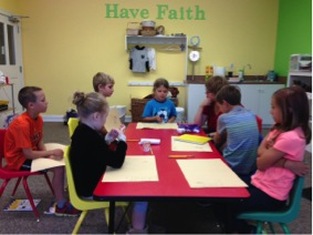
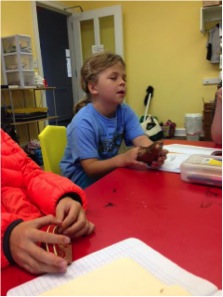
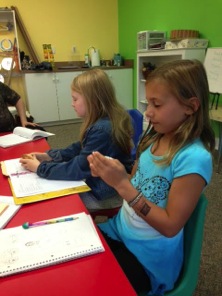
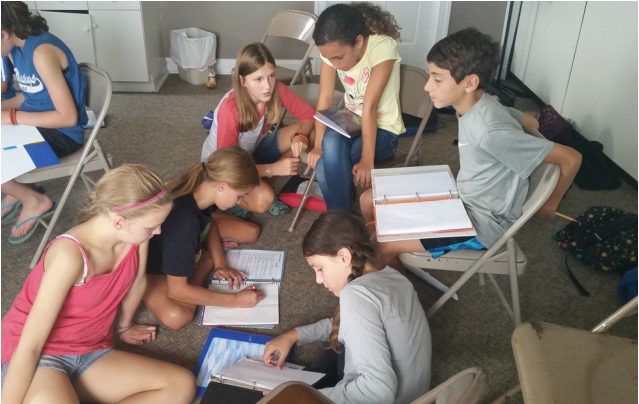
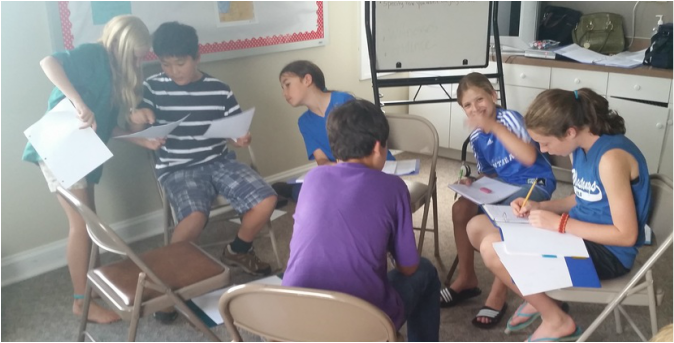
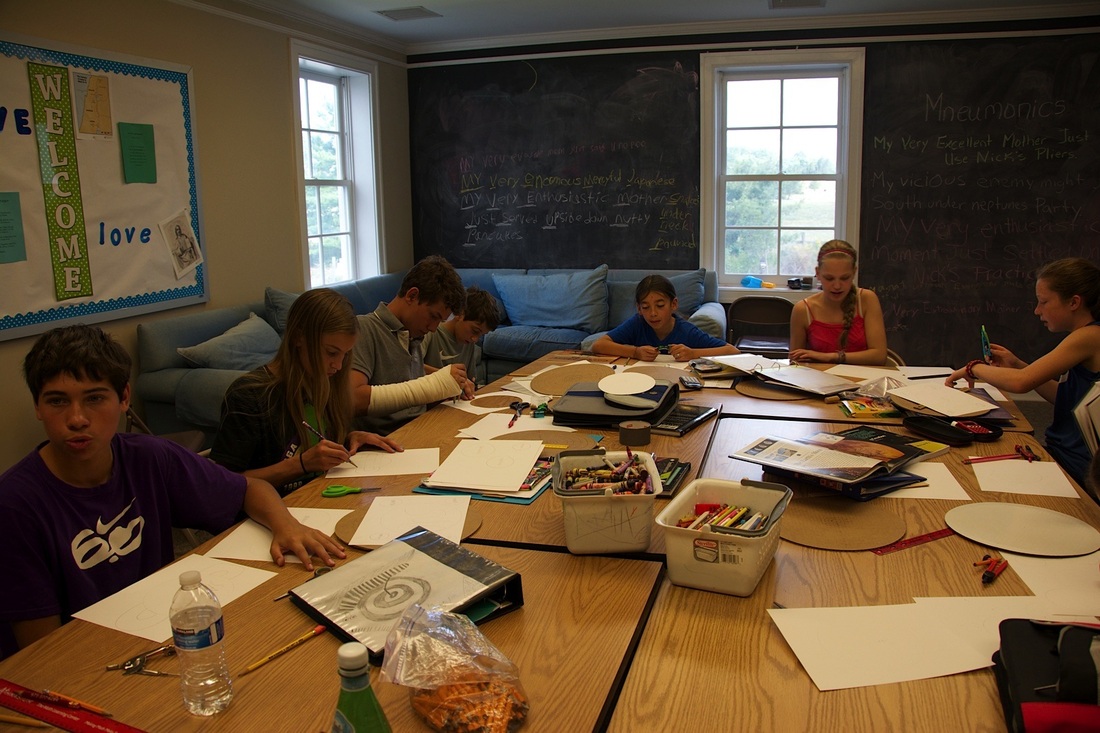
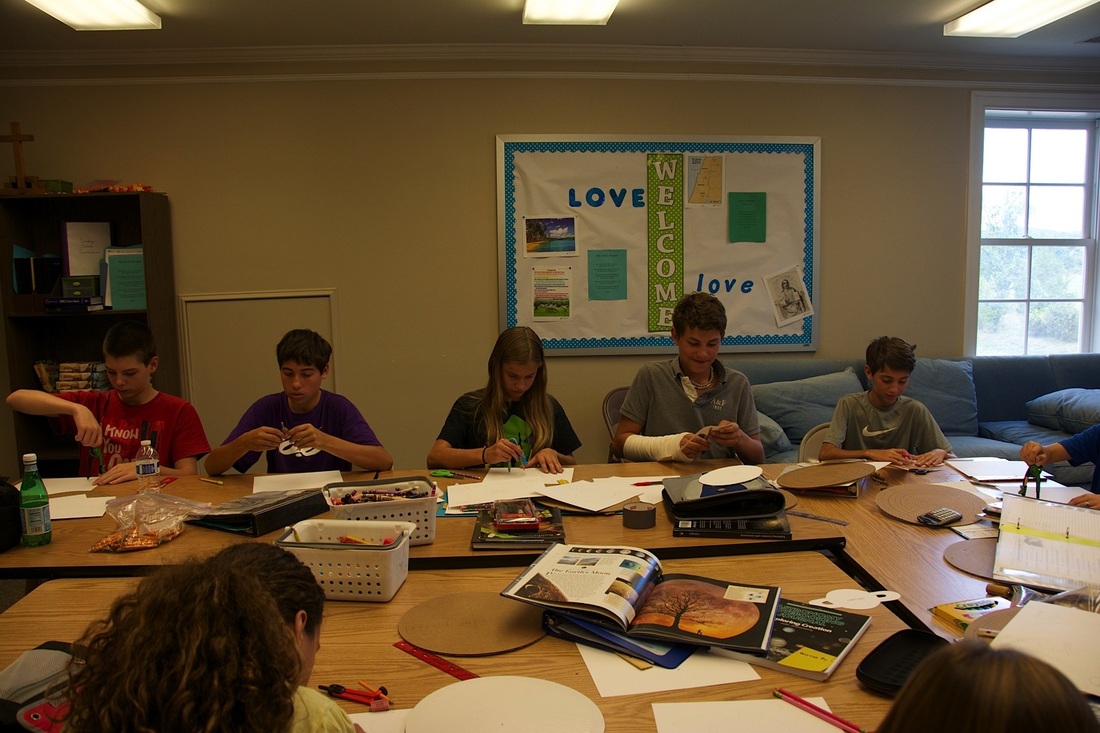
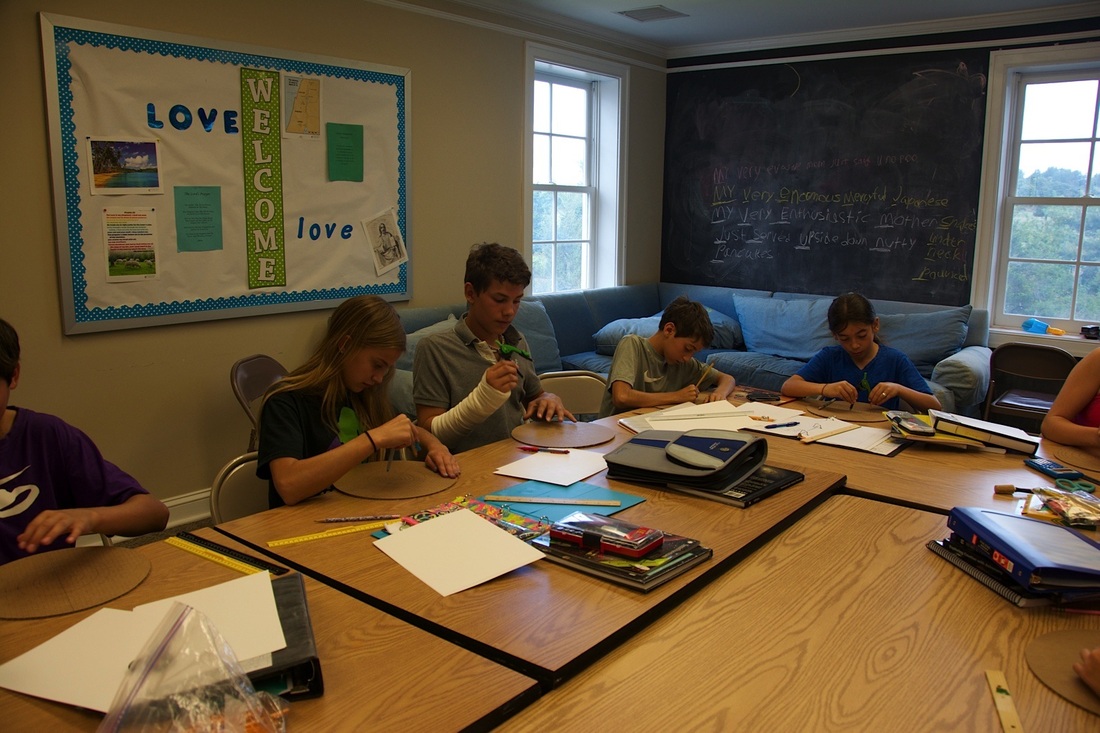
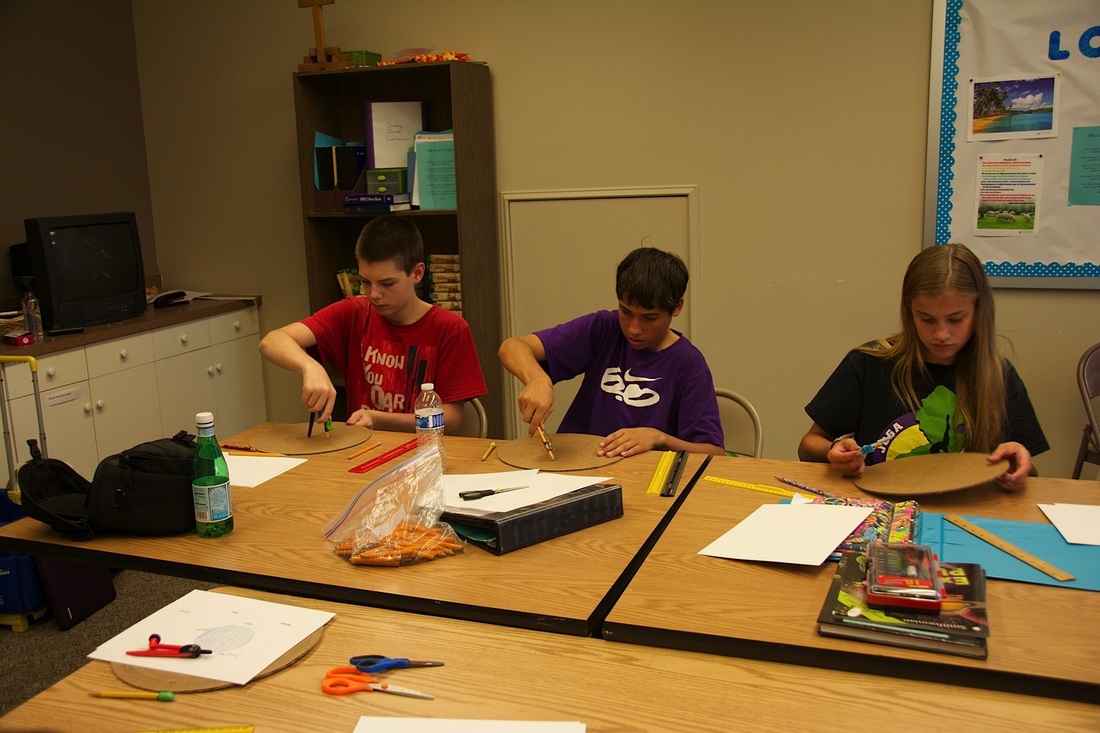
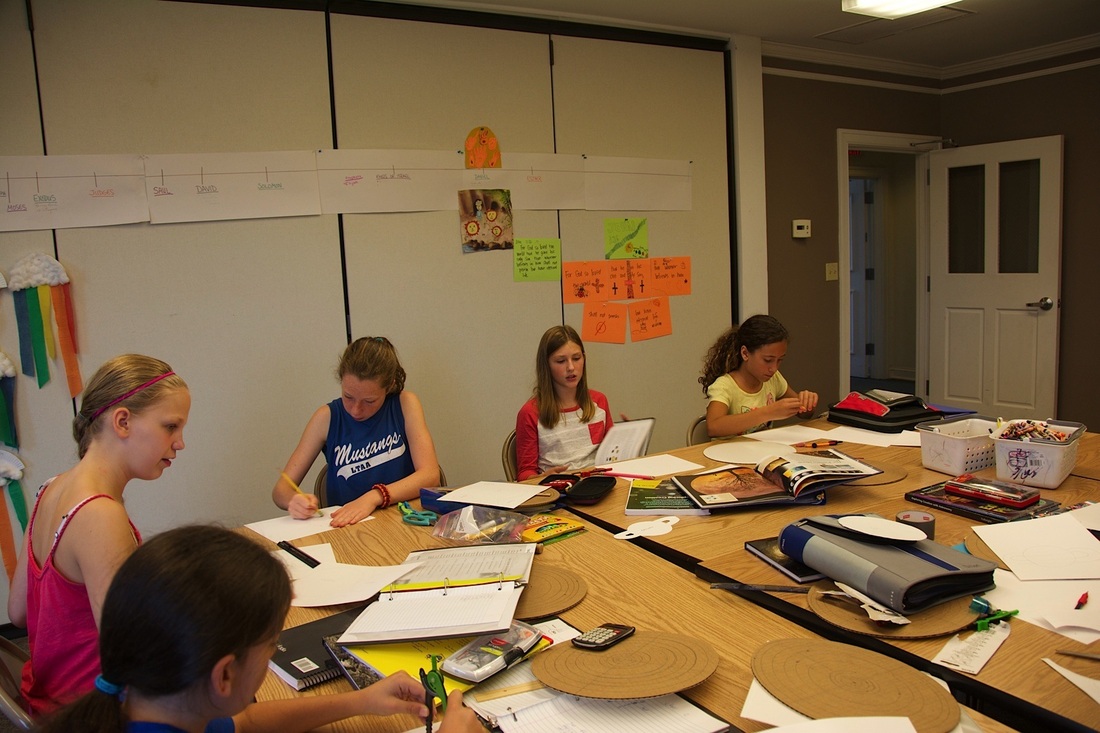
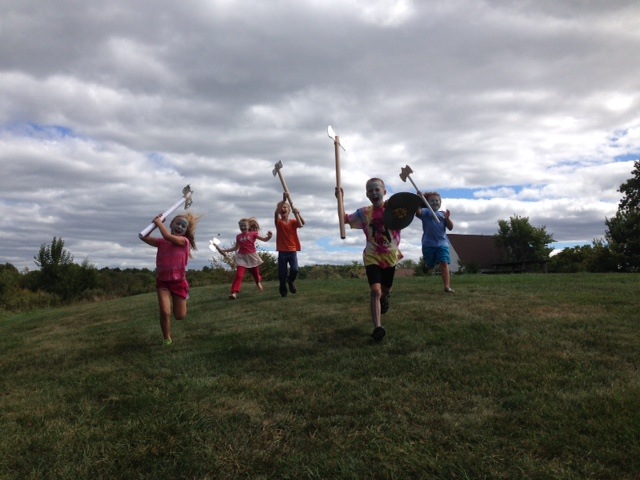
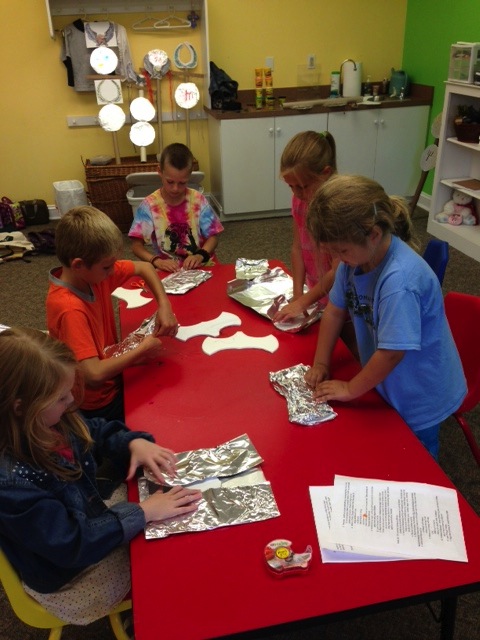
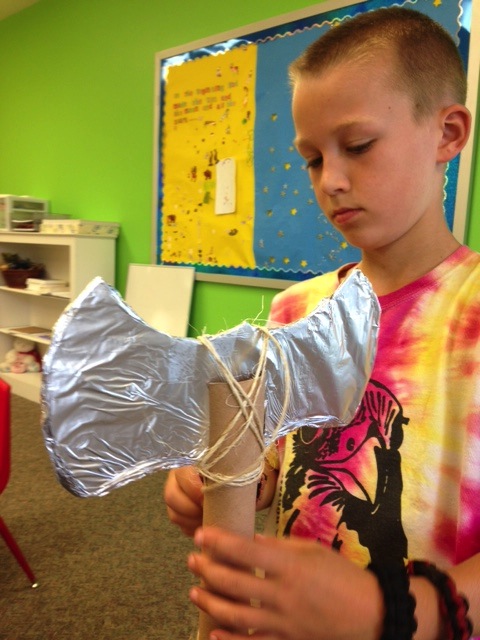
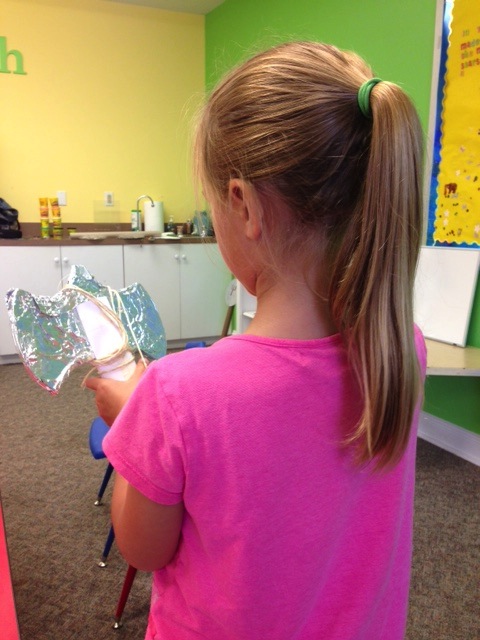
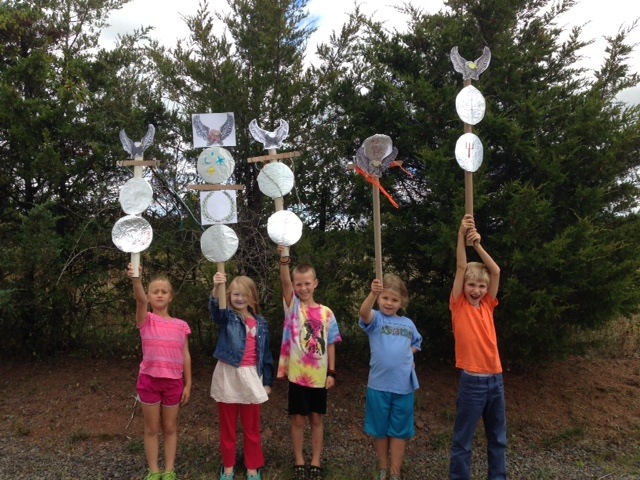
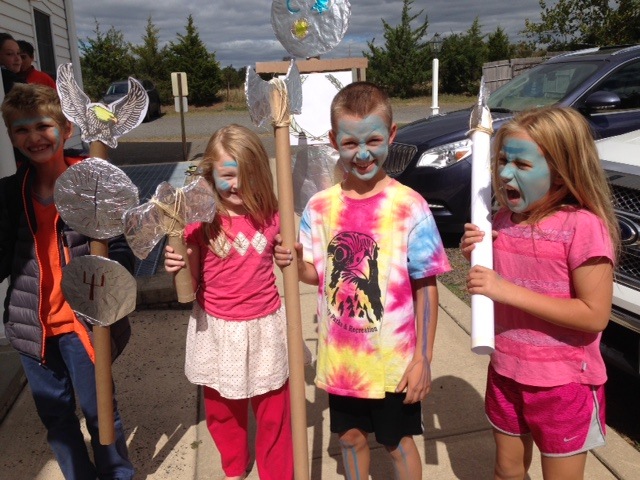
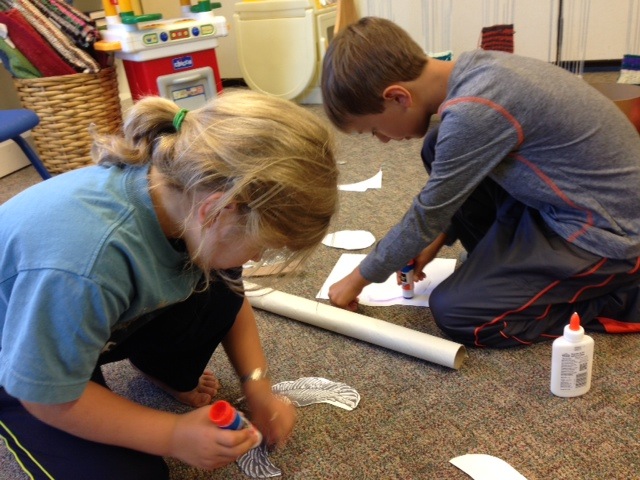
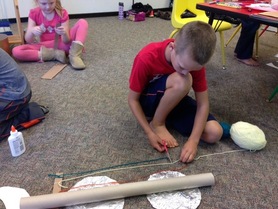
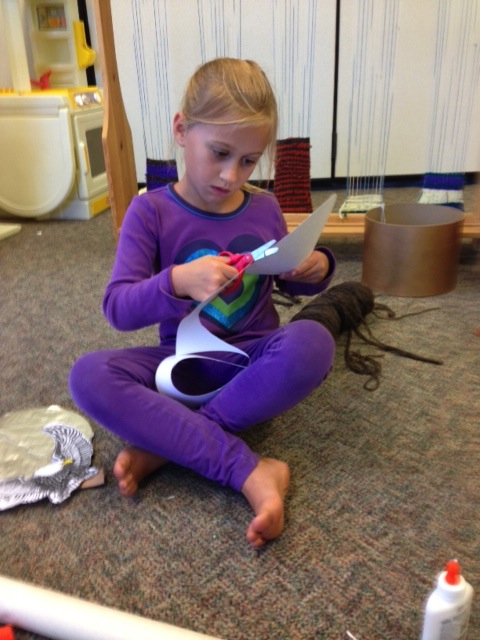
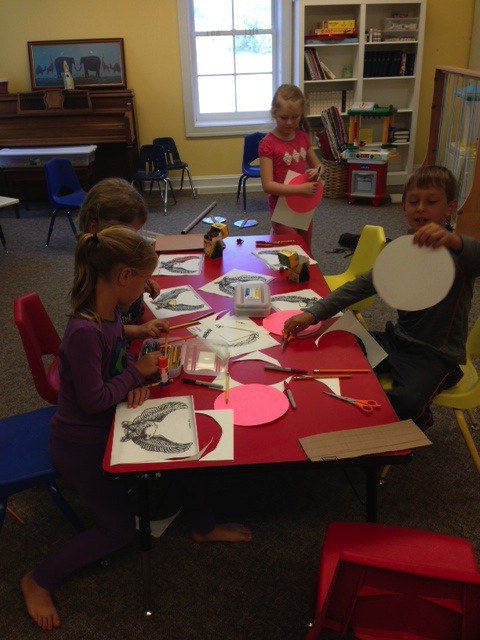
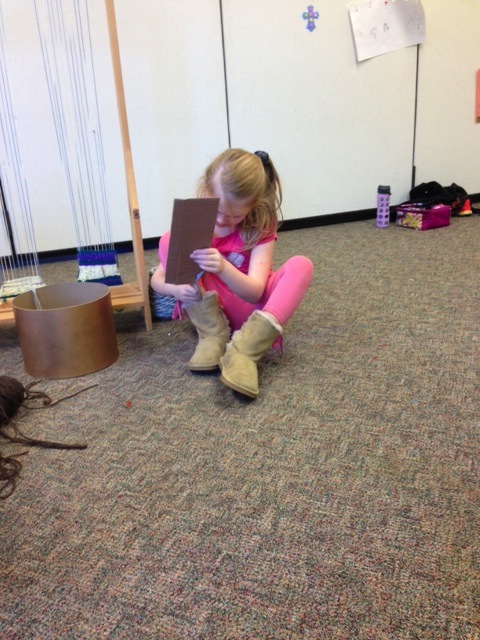
 RSS Feed
RSS Feed